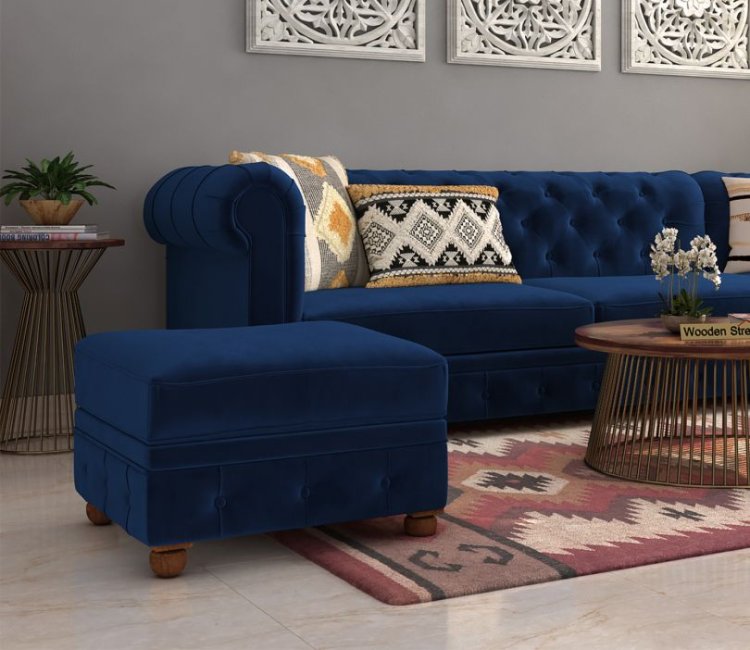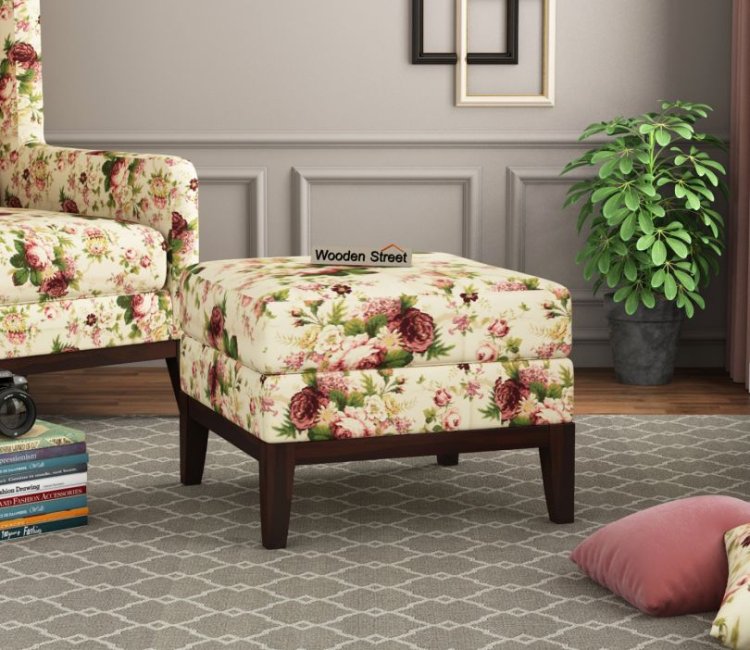How Do I Choose the Right Size Ottoman?
Share this Post to earn Money ( Upto ₹100 per 1000 Views )
Ottomans are a versatile and stylish addition to any living room, bedroom, or seating area. They serve multiple purposes, from offering extra seating and storage space to acting as a footrest or even a coffee table. However, choosing the right size ottoman can be tricky because it needs to fit the scale and functionality of your room. In this article, we’ll guide you through the key considerations to help you select the perfect ottoman size for your space.
1. Consider the Function of the Ottoman
The first step in choosing the right size ottoman is to determine its purpose. What role will the ottoman play in your room? The size will depend largely on how you plan to use it. Some common functions of an ottoman include:
- Footrest: If the primary function is as a footrest, it should be proportionate to the seating arrangement. Ideally, it should be about the same height as the seat of your sofa or chair, so your feet can rest comfortably.
- Seating: If you plan to use the ottoman as extra seating, it should be large enough to accommodate one or more people. Ottomans that are 18 to 20 inches in height work well for seating, as they are comparable to most chairs.
- Coffee Table Substitute: Many people use ottomans as coffee tables. In this case, the ottoman should be large enough to place trays, books, or decorative items on top while still leaving room for functionality.
- Storage: For ottomans that double as storage, you may want a larger piece to hold items like blankets, pillows, or magazines.
Once you’ve decided on the primary function of your ottoman, you can move on to selecting the right size based on the layout of your space.

2. Measure Your Space
Before purchasing an ottoman, it’s important to measure the space where it will be placed. This will help ensure that the ottoman fits well and doesn’t overcrowd the room. Here are some measurement tips to consider:
- For the Living Room: If you’re placing the ottoman in front of a sofa, make sure there’s enough space to walk around it comfortably. Leave at least 12 to 18 inches between the edge of the sofa and the ottoman to allow for movement.
- For Bedrooms or Smaller Areas: If the ottoman is going at the foot of the bed or in a small nook, measure the width and length of the available space. Make sure the ottoman won’t obstruct any pathways.
- Height: The height of the ottoman should align with the seating it will accompany. For footrests or coffee table alternatives, the height of the ottoman should generally be no more than one inch higher or lower than the seat of the sofa or chairs.
Taking accurate measurements ensures that the ottoman will complement rather than overwhelm the room’s layout.
3. Scale and Proportion
In addition to measuring your space, consider the scale of the ottoman in relation to the other furniture in the room. A large ottoman may feel out of place in a small room, while a tiny ottoman could look disproportionate in a spacious area. Here’s how to keep scale and proportion in mind:
- For Larger Rooms: A bigger ottoman can anchor a large seating arrangement, particularly in an open-concept living area. Consider rectangular or oversized ottomans if you have a sectional sofa or a large lounge space.
- For Smaller Rooms: In smaller spaces, opt for a more compact ottoman. Round or square ottomans can fit nicely in tighter layouts without overpowering the room.
Matching the ottoman’s scale to the size of your space ensures it serves its purpose without feeling out of place.
4. Shape Matters
When choosing an ottoman, the shape is just as important as the size. Different shapes suit different functions and room layouts:
- Round Ottomans: These are great for creating a softer, more casual look. They work well in smaller rooms or cozy corners where sharp lines might feel too harsh.
- Square or Rectangular Ottomans: These shapes tend to work well in larger rooms or as coffee table replacements. Their linear design pairs nicely with sectional sofas or rectangular seating arrangements.
- Ottoman Stools: For smaller areas or as accent pieces, consider an ottoman stool. This type of ottoman is typically compact and can easily be moved around, making it versatile for different areas of the home.
Choosing the right shape in combination with the size can further enhance the functionality and visual appeal of your ottoman.
5. Material and Upholstery
While size is important, the material and upholstery of the ottoman can also affect its overall presence in the room. Heavier, bulkier materials like leather or tufted fabrics can make an ottoman feel larger, while lighter fabrics can create a more airy and minimalist look.
Additionally, if your ottoman will serve as a coffee table, consider materials that are easy to clean, like leather or microfiber, especially if you plan to place drinks or food on it. For a seating or footrest ottoman, soft and cushioned fabrics may be a better choice.

6. Versatility for Different Uses
If you’re unsure about the exact size, consider an ottoman with built-in versatility. Ottomans with storage or nesting ottomans that come in multiple pieces can give you the flexibility to adjust the space as needed. This allows you to maximize both the functionality and aesthetic of the room without worrying about the ottoman being too large or small.
Conclusion
Choosing the right size ottoman requires careful consideration of its function, your available space, and the overall layout of the room. By taking accurate measurements, matching the ottoman’s scale to your existing furniture, and considering both the shape and material, you can ensure that your ottoman not only enhances the room's décor but also serves its intended purpose efficiently. Whether it’s an ottoman stool for a small space or a large, multifunctional ottoman for the living room, the right size will provide both style and comfort for years to come.















